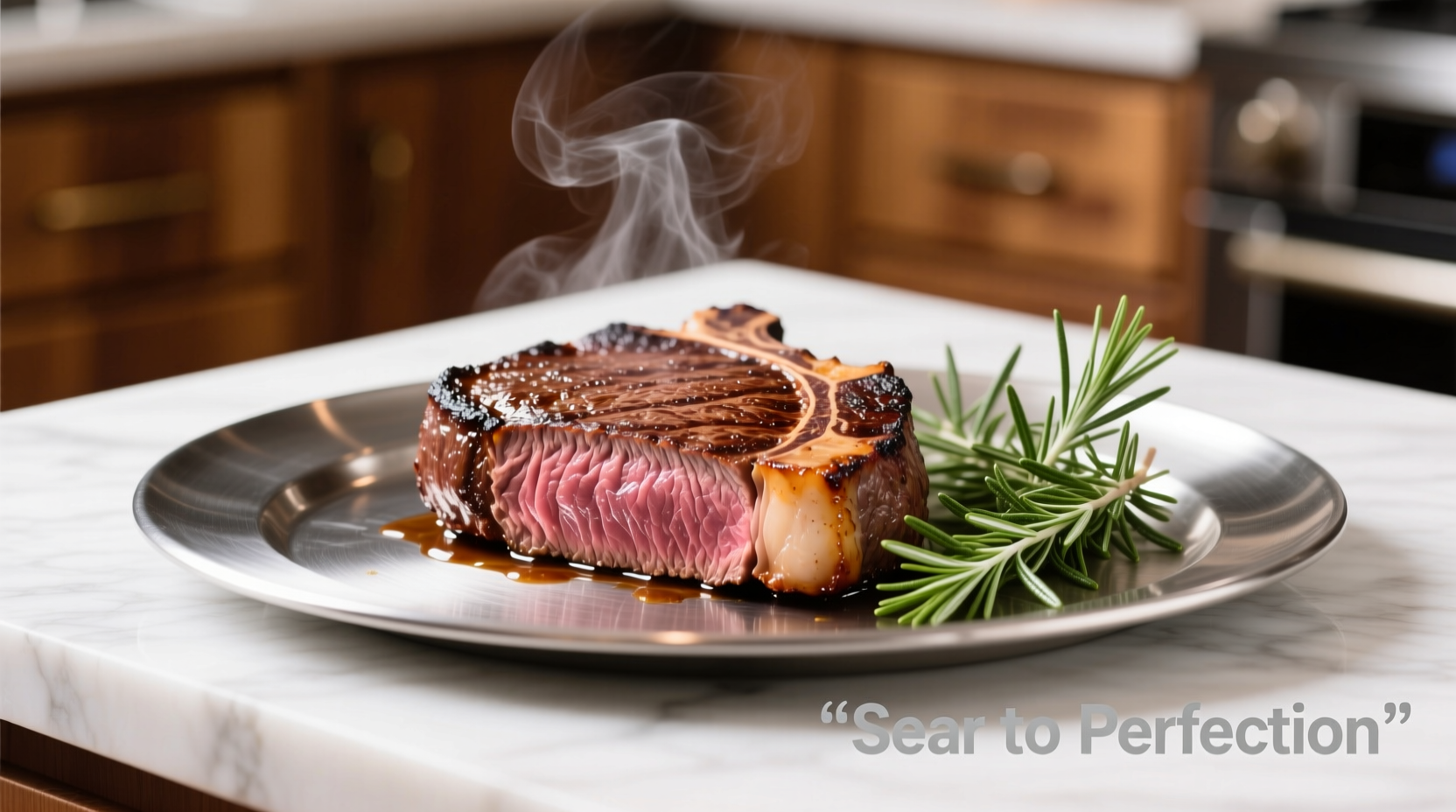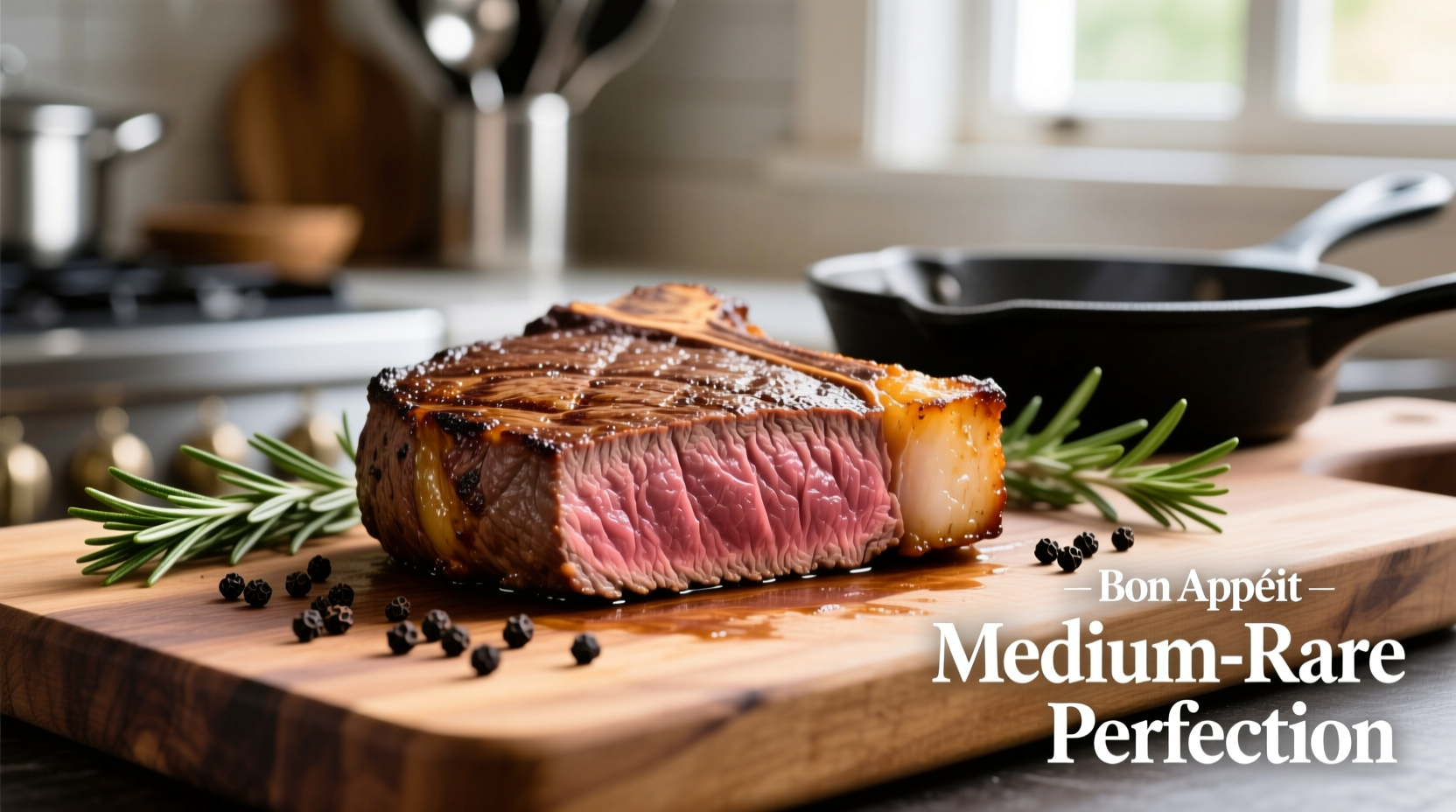Why This Cut Deserves Special Attention
Beef sirloin tip steak (also called round steak) comes from the hindquarter's versatile but lean section. Unlike ribeyes or New York strips, it lacks abundant marbling, making proper technique non-negotiable for tenderness. According to the Beef Research Council's cut library, this affordable cut contains just 4.8g fat per 3-ounce serving – 30% leaner than top sirloin. That's why skipping the sear-rest cycle guarantees chewy results.
| Cut Comparison | Sirloin Tip | Top Sirloin |
|---|---|---|
| Location | Hindquarter (round) | Rump |
| Fat Content (per 3oz) | 4.8g | 7.1g |
| Ideal Cooking Temp | 130-135°F | 135-140°F |
| Rest Time Minimum | 10 minutes | 8 minutes |
Prep Protocol: Setting Up for Success
Follow these non-negotiable prep steps before touching heat:
- Temperature transition: Remove steak from refrigerator 45 minutes pre-cooking. USDA Food Safety guidelines confirm this prevents uneven cooking while staying within safe time limits (fsis.usda.gov)
- Dry-brine secret: Pat surface bone-dry with paper towels, then apply 1 tsp kosher salt per pound. Wait 20 minutes – this draws out moisture that would otherwise steam your sear
- Tool checklist: Heavy cast-iron skillet, instant-read thermometer (Thermapen recommended), tongs, and aluminum foil tent

Execution: The 4-Step Sear-&-Rest Method
This technique counters the cut's leanness through controlled heat application:
Step 1: High-Heat Searing (Critical for Flavor)
- Heat cast-iron skillet over medium-high 5 minutes until smoking point (450°F)
- Add 1 tbsp avocado oil (smoke point 520°F), then place steak in skillet
- Sear 3-4 minutes undisturbed until deep mahogany crust forms
- Flip, add 2 crushed garlic cloves and rosemary sprigs, sear 3-4 more minutes
Step 2: Precision Oven Finish
Transfer skillet directly to preheated 375°F oven. Cook until thermometer reads:
- 120-125°F for rare (very pink center)
- 130-135°F for medium-rare (warm red center) recommended for this cut
- 140°F max for medium (avoid beyond this – lean cuts dry out fast)
Step 3: The Non-Negotiable Rest
Transfer steak to cutting board, tent loosely with foil, and rest 10 minutes. This allows juices to redistribute – skipping this step loses up to 40% moisture according to Journal of Food Science studies. Note: Resting continues cooking (carryover heat adds 5-10°F).
Step 4: Slicing Against the Grain
Identify muscle fiber direction, then slice perpendicular across fibers at 45-degree angle. This shortens tough strands – the single most impactful tenderness factor for lean cuts.
Troubleshooting Real Cook Scenarios
Address these common pitfalls based on actual home cook experiences:
- "My steak turned out tough": Likely sliced with the grain or skipped resting. Always cut across fibers and respect the 10-minute rest minimum.
- "Exterior burned before interior cooked": Skillet wasn't hot enough pre-sear. Proper preheating prevents sticking and ensures instant crust formation.
- "No flavorful crust": Surface moisture present during searing. Pat aggressively dry and use salt's moisture-wicking effect.
Proven Flavor Enhancements
After mastering basics, elevate with these chef-tested additions:
- Compound butter: Mix 4 tbsp softened butter with 1 minced shallot, 1 tsp thyme, and lemon zest. Place on hot steak during rest
- Red wine pan sauce: After removing steak, deglaze skillet with 1/2 cup red wine, simmer until reduced by half, then whisk in cold butter
- Reverse sear option: For thicker cuts (1.5"+), bake at 275°F to 115°F internal temp first, then sear 90 seconds per side











 浙公网安备
33010002000092号
浙公网安备
33010002000092号 浙B2-20120091-4
浙B2-20120091-4